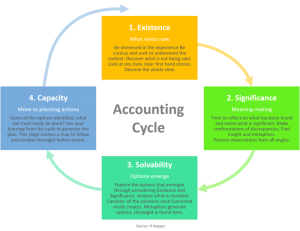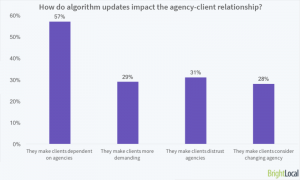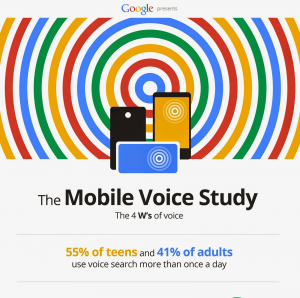Columnist Neil Patel reminds us that tried-and-true sales techniques are applicable (and effective!) in the digital age.

“Old-school sales techniques” sounds a little bit like a throwback to telemarketer tactics or the methods of the proverbial used car salesman. It’s true that “sales” has a negative reputation to deal with.
It’s too bad, really, because our entire lives are about sales. We’re always selling. We sell our ideas, we sell our energy, we sell our knowledge, we sell our skill, we sell our experience, we sell ourselves – all in appropriate and ethical ways.
To sell is to do life. And some of those old-school sales professionals, in spite of their fabled annoying techniques, had some savvy tricks that we would do well to bring back.
But here’s the thing. Everything has changed. We sell stuff online. We don’t strong-arm people into making decisions. We don’t powertalk helpless customers into corners where they have to buy. Our marketing media are web pages, emails, landing pages, capture forms, and calls-to-action.
We need to learn these old-school sales techniques, but we need to apply them in totally new ways.
1. Foot-In-The-Door Technique (FITD)
The foot-in-the-door technique – also known by its acronym, FITD – hearkens back to the days when “salesmen” sold vacuum cleaners to “housewives.” They lived out of station wagons and knocked on doors. And, they literally stuck their foot in the door to keep it from slamming in their face.
But the foot-in-the-door technique isn’t about preventing facial impact from slamming doors. It’s about something way more sophisticated.
The basic idea of FITD is that if you are able to get a customer to agree to something small, they will be more willing to agree to something large.
A small request paves the way for a large request.
The technique was proven to be effective back in 1966, the heydey of door-to-door sales. Two Stanford psychologists, Freedman and Fraser, conducted two large-scale experiments, both of which validated the hypothesis that people that are asked to do something small would be more agreeable later to do something bigger.
In the first test, the researchers telephoned a group of women and asked them to describe the household cleaners they used. They followed up with these women, asking permission to visit their homes to take an actual inventory of their broom closets and cupboards for cleaning supply brands and usages. Surprisingly, a large percentage (52%) of the women agreed to the request, many times more than a control group (22%) which was not first solicited by telephone with the smaller request.
A second experiment brought about the same results. Researchers asked people to put a small sticker promoting cleanliness or safety on their car or home. Those that agreed to the request were more likely than the control group to later agree to the installation of a billboard in their yard with the same message!
Countless tests since 1966 have affirmed and reaffirmed the findings of Freedman and Fraser. The foot-in-the-door technique just works.
How does it work in online marketing? The principle is simple. First, ask for something small; next, ask for something bigger.
Here are the kinds of things you can ask for:
- Email address
- Webinar attendance
- Twitter follow
- Facebook like
- Google+ follow
- Watch a video
- Comment on a blog
- Download a free e-book
Those are simple, no-cost requests. If customers respond positively, then they are more likely to respond well to another bigger request – a sale, a download, a trial, etc.
2. Face-In-The-Door Technique
The face-in-the-door technique sounds a lot like the foot-in-the-door technique, but it’s actually built on the opposite idea. And don’t worry; it’s not as violent as it sounds.
If you ask for something enormous from the customers, they will likely reject it. Then, if you follow up that request with something more modest, they’d be more likely to accept it.
A car salesman walks you into the showroom and invites you to purchase a $450,000 vintage Bentley automobile. You politely decline. He walks you over to a Toyota Yaris, priced at $14,000. You’re more likely to purchase.
A study published in Cyberpsychology and Behavior found that the face-in-the-door technique was as effective in online contexts as it was in offline situations.
Subjects in the study were first asked to do something large — to spend several hours each week searching for donors to contribute to the assistance of injured children. If the subjects refused the request, then they were directed to a page where they could make a small donation. Subjects that were first presented with the large request were more willing to contribute.
You can carry this technique out in online marketing using a technique similar to the study above:
- First ask for something large — an outright five-year, lump-sum SaaS subscription. It costs $6,000. If the user refuses, no problem. Follow up with a request for a no-risk trial signup – 30 days free. Statistically, they will be more likely to comply than if you simply presented them with the free 30-day offer.
- You can do the same with email marketing. Send one email asking for, say, attendance to a three-day conference in Geneva, Switzerland. If they refuse, no problem. The next day, ask your mailing list to sign up for a thirty-minute webinar.
- You can do the same thing on a landing page. Early in the page, ask for a large conversion or cash purchase. Later on, ask for a smaller conversion such as an email address, a case study download or something similar.
The face-in-the-door technique feels hard at first, but it can be enormously successful.
3. The “Give Me A Week” Technique
Attaching a time frame to something – anything – increases the likelihood of a conversion. In a time-driven culture, we are very sensitive to requests that have to do with time.
The “give me a week” technique is used by consultants or other service providers. They state “give me a week (or month, or year)” and I’ll raise your revenue, or bring you traffic, or close more sales, or sell your house or whatever it is they’re pledging to do.
Telling the customer that you’ll do something in a certain amount of time helps to direct their expectations, which is very important in marketing a product.
It’s very easy to do this online.
Here’s a LinkedIn technique where a sales professional is using this technique:
The technique is effective for SaaS, consultants, apps, and even for consumer goods.
For example, let’s say you are selling a sleep monitoring app. In your landing page or app description, write “Give it a try for a week, and your sleep quality will noticeably improve!”
Set your own time frame – a week, 24 hours, whatever – then shape the customers’ expectations within that time frame.
4. The Scarcity Technique
“ACT NOW! YOU’LL NEVER SEE A DEAL THIS GOOD AGAIN!”
That’s the scarcity technique at play.
It sounds cheesy. If you’re not careful, it is. What’s worse is that it’s usually false. How can furniture stores go out of business every year, several times a year? Who really believes it?
The urgency technique is very effective. The idea is to raise the intensity of the situation so the customer responds immediately rather than later, or potentially never.
Persuasion psychologists have long known that the scarcity principle can help turn a reluctant shopper into an active customer. An article in Entrepreneur’s Journey describes the principle:
Scarcity refers to any limitation placed on a product or service with the goal of increasing sales through pressure placed on the consumer. The fear of missing out causes people to make the decision to buy.
The principle translates seamlessly into online marketing. You can increase urgency by using time signals or availability signals.
- Webinar signups are closing in 2 days. Sign up now.
- We are selling this product until the supply runs out. Only 9 left.
- I have limited consulting hours available this month. Book your consultation now.
Some online sites depend on the scarcity technique. It forms the core of Groupon’s strategy
Scarcity doesn’t need to be a sham. In the case of Groupon, it’s a legitimate limitation, even if it’s a self-imposed one. In the case of consultants, they only have a certain number of hours that they can provide consulting services.
If you’re upfront about this — and use numbers and time limits to say so — you’ll be able to gain more conversions.
5. Badmouth The Competition
No, I don’t mean this in the actual sense.
Sadly, badmouthing the competition was used as a sales technique by some of those old-school salespersons.
“Yes, well, we know about ACME Corp. Their products are faulty. They’re made out of sand. Oh, and did you hear about the CEO? Big, big, scandal! Ooh, naughty naughty!”
Badmouthing the competition does more to discredit you than it does to discredit the object of your badmouthing.
What’s the appropriate online correlation? It’s differentiation.
You don’t have to badmouth the competition to assert your superiority. You simply need to imply how you’re different and better.
Many companies do this with product comparison charts. They display a chart of benefits, features, and prices showing how their product or service is superior to the others.
Crazy Egg, which competes with other reporting platforms like Google Analytics, does this:

Crazy Egg says nothing negative about Google Analytics. It simply points out one of the software’s shortcomings, and how the Crazy Egg platform provides what Google Analytics can’t.
Instead of badmouthing competitors, it’s far better to point out shortcomings and differences. This helps the customer understand that it’s not necessarily a question of “good vs. bad,” but “what’s right for me.”
Conclusion
Sales is sales. It’s about mental connection, psychological understanding and relationship building. This looks and feels entirely different on websites than it does in a timeshare sales office.
However, some of the principles remain the same. They’re softer. They’re nicer. And they’re still very effective.
How do you use old-school sales techniques in online settings?
Marketing Land – Internet Marketing News, Strategies & Tips
(378)
Report Post









